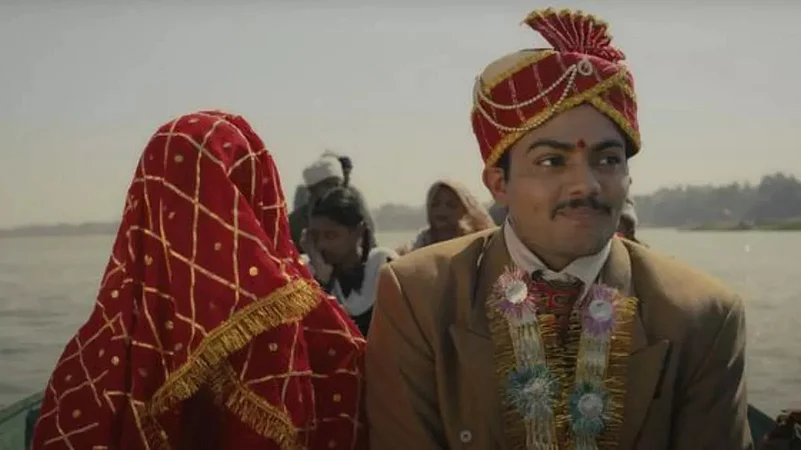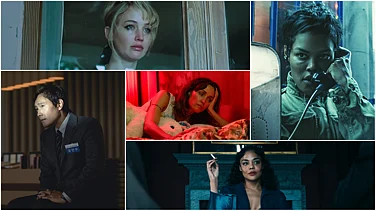The Film Federation of India (FFI) is criticized every year while announcing the country’s Oscar submission. The slip-ups are so frequent that they indicate a wilful blindness to the holistic and complex factors underpinning a strong entry. The minute the Jahnu Barua-led jury announced Laapataa Ladies as the pick, it has unsurprisingly been met with a tide of backlash. The choice side-steps the global buzz around the Cannes Grand Prix-winning All We Imagine As Light.
Though the ensuing discourse has largely stuck to the jury citation and Oscar-obviousness in All We Imagine As Light’s international acclaim, several similarities tie Payal Kapadia and Kiran Rao’s films. Both drive on a multi-generational understanding of womanhood. Women across age brackets teach one another how to shift away from passed-down ideas and perceive anew the trajectory of their lives. In Laapataa Ladies, Manju Maii (Chhaya Kadam) guides with a kind firmness the young and hesitant Phool (Nitanshi Goel) towards a surer sense of her own self, one that can imagine joy and completeness in independence too. Rao’s film concludes on a hopeful note, offering agency and recognition to its female protagonists. To its credit, the film doesn’t backtrack on Phool’s desire. Instead it expands her notion of the many roads she can take. A marriage isn’t just the be-all and end-all of a woman’s life, neither is worshipping her husband. Fundamentally, the film legitimises a freedom of choice for both Phool as well as Jaya (Pratibha Ranta), who embarks for her higher studies.

But what exactly does women’s freedom look like? Figuratively, All We Imagine As Light picks up the story few steps after Laapataa Ladies drops off. Both the movies have fable-like textures, though Kapadia starts with understated realism and later takes a delightful, dreamy swerve into magic realism. The three women in her film are independent entities, living on their own. The two Malayali nurses and roommates, Prabha (Kani Kusruti) and Anu (Divya Prabha), and the hospital cook Parvaty (Chhaya Kadam) have financial freedom with which they get by even if Mumbai encroaches on a life of dignity.
As fluidity and heterogeneity undertow Kapadia’s storytelling, we get docu-like dashes of voiceovers. Migrants to Mumbai talk of living in the city for as long as twenty years yet recoil at calling it home. “You better get used to impermanence”, a voice warns in the opening sequence. Characters inhabit within a tight squeeze, with the tallest buildings crushing out the city’s residual non-gentrified spaces. Real estate builders threaten to snatch away from Parvaty the home and life she built in the city over decades. Without proper documents, she can’t lay claim to her own home.
Away from home, the women in Kapadia’s film find solace and family in the friendships with one another. They are discrete beings, each with their own likes and dislikes. All three are caught in a scuffle between surrendering to their circumstance and rassling out resistant ways of being. Their friendship sustains them for as long as possible before the city cuts itself loose.
The younger Anu’s beliefs are dramatically different from Prabha. She’s sprightly and liberal in her relationships whereas the guarded Prabha is wary of stepping outside the line of gendered expectations. Kapadia juxtaposes these two characters, representative of two disparate generations, buttressing each learning from the other.

This tension shades the film’s exploration of growth and self-reappraisal. Kapadia fleshes out their relationship in a manner that’s neither cloying nor bitter. Kapadia wrenches from Indian womanhood the tussle between tradition and modernity, while locating intersections at which identity maps out. This is where Laapataa Ladies and its gaze on womanhood, though it has a different, rural setting, feels lacking and limited. For all the troubles the two brides run into, almost every other character they encounter seems to have a heart of gold. Even the corrupt police inspector who suspects Jaya for the longest time gets a redemptive flash by being the one who helps her advance to the future she desires. It plays out like a joyous, simple-minded fantasy, where any deeper tint of local politics is repressed.
In All We Imagine As Light, Kapadia links varied modalities of reality, how one experiences the world, sweeping together the intimate and political. Anu’s (Hindu) interfaith romance with Shiaz (Hridhu Haroon), who’s Muslim, bristles with a clandestine, forbidden edge in India’s polarised political climate. In a later scene, when the two sneak into a cave in Ratnagiri, a shot of its wall reveals the Azaadi slogan scrawled beside the graffiti of other lovers. This is a film alert to the violently colliding cadences of contemporary Indian life, yet Kapadia never resorts to a vinegary tone. For all their constricted situations, her heroines salvage grace, transcendence and transformation.
All We Imagine As Light educes the great Brazilian writer Clarice Lispector’s words about “the courage to give birth to oneself, and to leave one’s former body on the ground”. Kapadia refuses fixed positions to any character; they are in vigorous flux, permeable to change, a new flush of spirit. In a country skidding into greater stratifications, Kapadia’s heroines quietly bear the strongest dissident counterpoint of solidarity and sisterhood. No other recent Indian film has caught hold of India’s temper, the fraught interplay between micro lives of its citizens and the larger mood of the nation, with such bracing minimalism and precision. Riding on a juggernaut of world sales, an awards circuit-savvy US distributor like Janus Films and clear legibility to international audiences, All We Imagine As Light would have been a shoo-in at the Oscars.




























